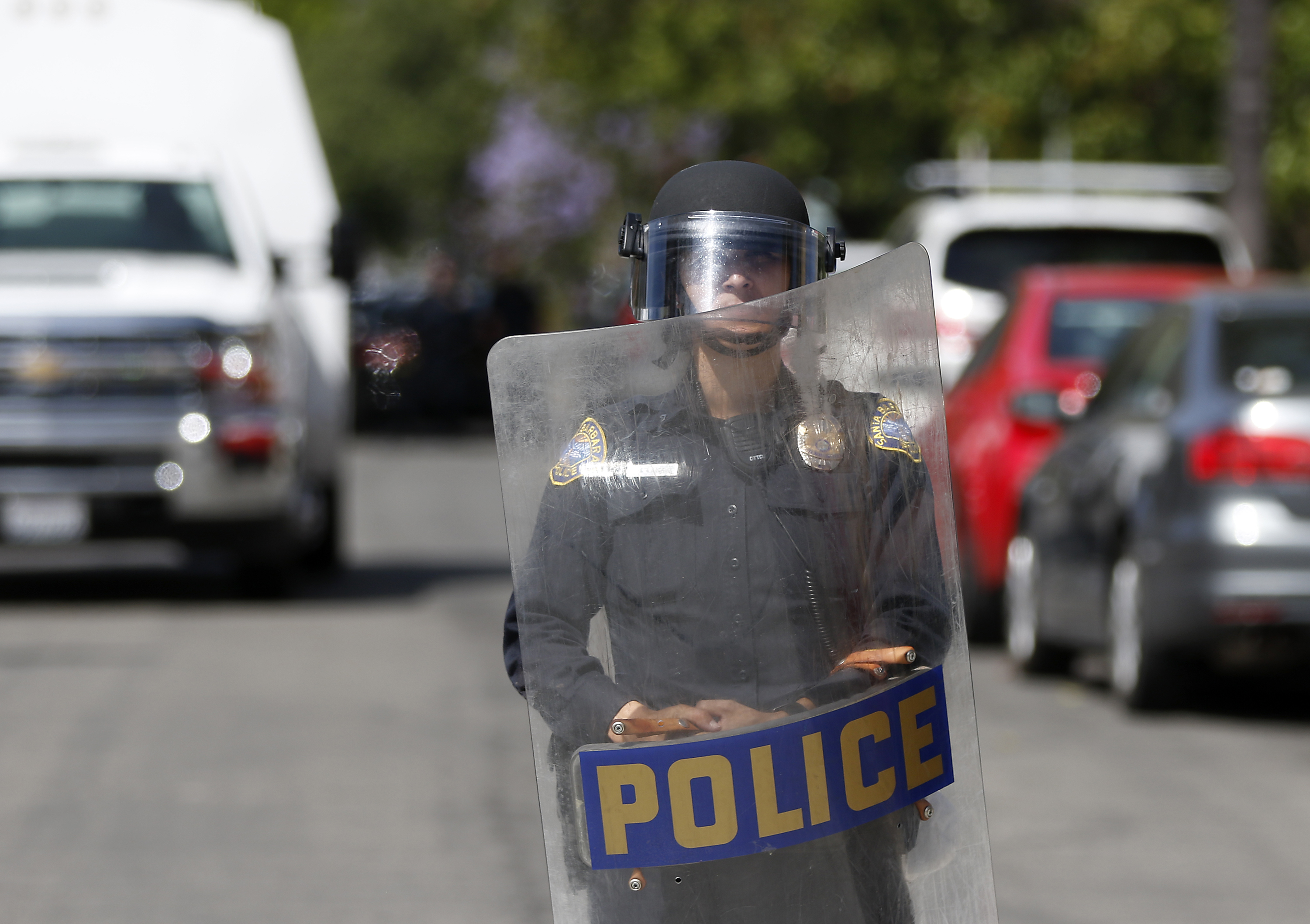How Often Do Santa Barbara Police Use Force?
And Whom Do They Use It Against?

Only around 1.3 percent of Santa Barbara’s population is black. Yet when police get physical ― with kicks, punches, baton-strikes, and take-downs, as well as other forms of muscle like tasers, pepper spray, and canines ― 8.7 percent of the time, the target of their force is black. Latinos make up just 36.5 percent of the city’s population but were involved in 44.2 percent of use-of-force incidents.
These statistics are included in a nine-page document provided by the Santa Barbara Police Department in response to questions this week from the Santa Barbara Independent and community groups while coast-to-coast protests continue over the death of George Floyd and long-standing grievances around racial disparities in policing. The Independent is requesting additional information from the department and will be asking the county Sheriff’s Office for similar data.
Since 2015, city police have logged 788 force incidents out of 355,777 total contacts; 69 of them involved black people, 346 involved Latinos, and 339 involved white individuals. Overall, police used force in 0.22 percent of their interactions with the public. That figure dropped to as low as 0.18 percent in 2017 and has risen to a high of 0.36 percent through June 1 of 2020.
The most common type of force deployed, according to the statistics, was the “take-down” (399), followed by “strikes/kicks” (113), “control hold/grappling” (67), and the use of a “WRAP” (55), a type of full-body straitjacket. Officers fired their tasers 36 times, used pepper spray 18 times, and unleashed their dogs during 12 incidents.
The “carotid restraint” ― a type of neck hold during which an officer compresses the sides of a person’s neck to restrict the blood flow to their brain and render them unconscious ― was used three times in five years, all in 2018. Neck holds by police in general, including the choke hold, which killed Eric Garner in 2014, have again come under scrutiny after Floyd’s fatal asphyxiation under an officer’s knee.
The Santa Barbara Police Department Manual, last updated in 2019, states the “carotid restraint” should only be used as a last resort “due to the potential for injury.” During a rally this Saturday, however, Chief Lori Luhnow vowed to revise the manual’s Use of Force policy to completely ban carotid holds.
Activists here on the Central Coast and across the United States have also called for police departments to ban the practice of shooting at moving vehicles. The Santa Barbara police manual discourages shooting at cars, explaining, “Shots fired at or from a moving vehicle are rarely effective,” but doesn’t outright forbid it.
The manual does, however, require that officers attempt to de-escalate situations before using force. “An officer shall use de-escalation techniques and other alternatives to higher levels of force consistent with his or her training whenever possible and appropriate before resorting to force and to reduce the need for force,” it states. The manual also outlines an officer’s duty to intervene if he or she sees one of their colleagues “using force that is clearly beyond that which is objectively reasonable under the circumstances.”
All Santa Barbara police vehicles are equipped with a video camera, and all officers wear an audio recorder. Some officers also wear body cameras. The policy manual says these Mobile Audio Video (MAV) systems must be switched on during “All field contacts involving actual or potential criminal conduct,” which includes traffic stops, pedestrian interactions, domestic disturbance calls, and so on. “Once the MAV system is activated, it shall remain on and shall not be turned off until the incident has concluded,” the manual says.
Since 2016, 140 complaints have been filed against the department, 46 in 2019 alone. Eight of the complaints alleged racial discrimination, and nine accused officers of using excessive force. Of the 140 total complaints, 17 were “sustained,” meaning an internal investigation revealed officers did indeed violate some type of departmental policy.
The data did not, however, provide any details of the incidents in question or state how many of the sustained complaints involved race or use of force. Nor did it offer any information on disciplinary actions.



